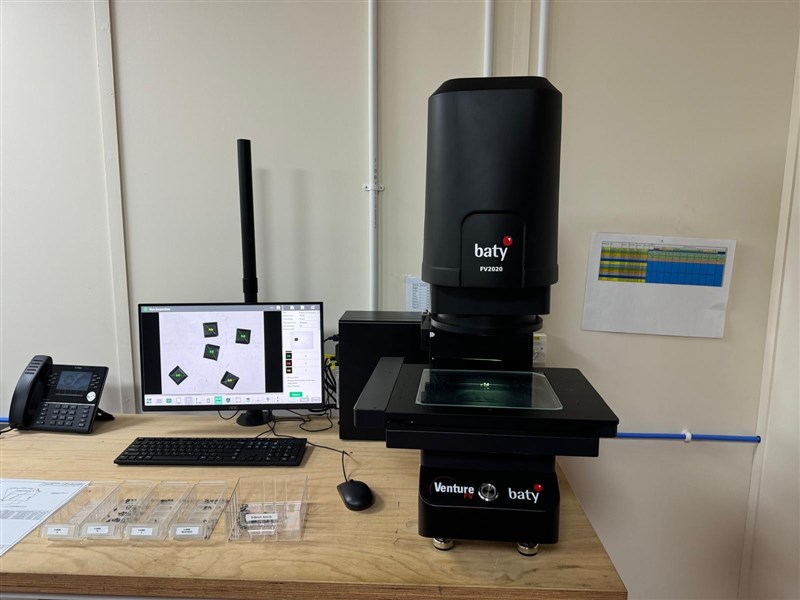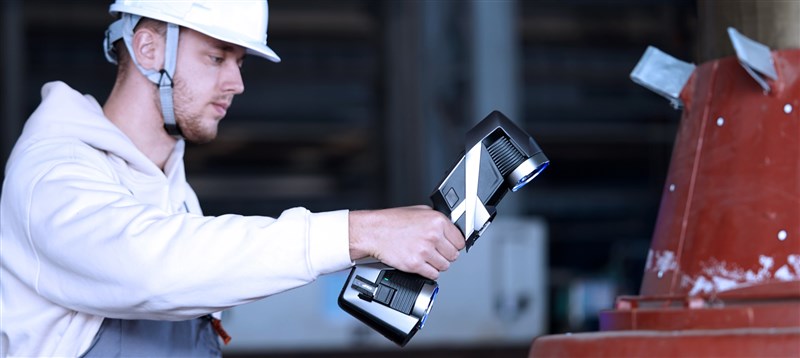
Recognising the need for a faster and more repeatable solution, Bowers Group turned to the Baty Venture FV 2020.

A breakthrough opportunity for R&D processes awaits the Vietnamese engineering community. The specialized workshop "Driving Engineering Innovation Through Smart Simulation" organized by ANSYS will take place on October 29, 2025, at the Innovation Hub Building, updating the latest advanced simulation solutions for the manufacturing, electronics design, and Nano-Micro industries.

The portable 3D scanner market is on the brink of significant expansion. With ongoing technological advancements and the integration of 3D scanning in various sectors, this market is poised to grow rapidly over the next decade. This article delves into the factors contributing to this growth, the projected rates across different regions, and the challenges and opportunities that lie ahead.
As the demand for electric vehicles continues its upward trajectory, automakers are making significant investments in the advancement of battery technology. Their focus is on delivering extended driving ranges and faster charging capabilities.
What is an EV Battery Case?
EV Battery Case Materials
Aluminum vs. High-Strength Steel: Which to Choose?
Summary
As the demand for electric vehicles continues its upward trajectory, automakers are making significant investments in the advancement of battery technology. Their focus is on delivering extended driving ranges and faster charging capabilities.
Within these critical developments, the importance of the EV battery case cannot be overstated. This article will delve into the definition of an EV battery case and explore the various materials currently utilized in its production.
In the realm of new energy vehicles, the battery box represents a crucial added component, contributing approximately 3,000 yuan to the value of each vehicle. Primarily composed of an upper cover and a lower case, the battery box serves as the structural framework – the "skeleton" – for the power battery module. Its primary functions are to safeguard the battery pack against external impacts and provide protection against dust and water ingress.
Within the structure of a lithium-ion battery system, the EV battery case constitutes a significant portion, accounting for roughly 20-30% of the system's total weight. It stands as a principal structural element.
Consequently, while ensuring the functional safety of the battery system and the overall safety of the vehicle, reducing the weight of the EV battery case has emerged as a key objective for enhancing battery system performance.
The pursuit of lightweight EV battery case technology encompasses the adoption of new materials, innovative manufacturing processes, and advanced designs. These include integrating the case with the thermal management system and implementing integrated body designs.
A variety of materials are employed in the construction of EV battery cases, including steel plates, aluminum plates, extruded aluminum, die-cast aluminum, fiberglass composites, SMC composites, and carbon fiber composites.
The Nissan Leaf utilizes a steel shell, primarily manufactured through steel stamping and spot welding. Steel shells offer high strength and rigidity, and the manufacturing process is relatively simple. This represents a traditional and well-established approach in body manufacturing.
Aluminum Plate + Die-Casting Aluminum:
Battery tray boxes made from cast aluminum offer excellent structural integrity, effectively avoiding the welding, sealing, water leakage, and corrosion issues associated with steel or extruded profiles. The hybrid versions of the Cadillac CT6 and Audi Q7 e-tron both feature aluminum alloy casings. In these models, the lower battery case is crafted from die-cast aluminum alloy, while the upper case (cover plate) is made from stamped aluminum plate.
The aluminum alloy die-casting process for the lower shell allows for single-step molding, which simplifies manufacturing and provides enhanced strength, rigidity, and sealing performance.
The aluminum alloy upper shell primarily serves a sealing function, with stamped aluminum plate parts used to minimize weight. Due to limitations in the tonnage capacity of die-casting equipment, aluminum die-cast shells are typically smaller in size and are commonly found in power battery systems for hybrid vehicles.
Aluminum Plate + Extruded Aluminum:
Battery shells constructed with an aluminum alloy frame and aluminum plate offer flexible structural design, significant weight reduction, and utilize mature technology. The extruded aluminum frame provides high rigidity and strength, while the aluminum plate stamping parts ensure sealing. Examples of vehicles using this structure include the Tesla Model S, NIO ES8, and Volkswagen MEB projects.
Plastic + Aluminum Plate:
BYD, a leading global electric vehicle manufacturer, employs a combination of plastic for the upper plate and aluminum for the lower plate in their battery cases. This strategy aims to increase the energy density of the battery pack and extend the vehicle's driving range.
As an illustration, the BYD Qin Pro EV500 demonstrates a weight reduction of 157 kg in its battery pack compared to the previous generation Qin EV model, with the system energy density increasing to 160 Wh/kg. According to official BYD data, the Qin Pro EV500 achieves a cruising range of 420 kilometers and a maximum range of 500 kilometers.
Models like the Geely Emgrand EV450 and GAC Trumpchi GE3 530 utilize lightweight SMC materials for the upper shell and high-strength aluminum for the lower shell. The latter achieves a battery system energy density of 160Wh/kg, placing it at a mainstream level.
The carbon fiber reinforced composite (CFRP) battery casing used in the NIO ES6 is remarkably 40% lighter than conventional aluminum or steel battery casings. It boasts high rigidity and a thermal conductivity that is 200 times lower than that of aluminum.
Hot-formed steel can also be used for EV battery cases. In the event of a collision, it plays a crucial role in preventing intrusion into the battery pack and mitigating risks such as fire and explosion. However, it currently lacks widespread application in automobiles.
Furthermore, materials like foamed aluminum are being explored for EV battery cases, but their use in automobiles remains limited.
Based on a comprehensive evaluation of material properties, aluminum alloy materials stand out as initially meeting the structural demands of vehicle components, including battery systems. They remain a preferred choice for replacing certain steel structures.
However, high-strength steel plates are also advancing in lightweight technology. Consequently, aluminum alloy materials and lightweight high-strength steel plates are in a continuous state of competition for material selection.
Undoubtedly, aluminum offers the most significant potential for weight reduction, suggesting its increasing adoption in the future. Despite the relatively higher cost of aluminum alloys, their excellent machinability, low density (2.7g/cm³), corrosion resistance, and high recyclability present clear advantages. These are important indicators in the quantification process.
Of course, the application of aluminum alloys across various vehicle models is influenced by cost factors.
The Tesla Model S stands out as the vehicle with the highest aluminum content. From its body to the structure of its battery system, aluminum materials constitute a large proportion. This is partly due to the Model S's initial target market of luxury consumers.
However, the most prevalent material in other popular models is high-strength steel, primarily due to its cost advantage. For instance, vehicles like the Nissan Leaf, Volkswagen Golf, and Toyota Prius tend to focus on the utilization of high-strength steel plates and specially shaped steel components.
In reality, it's unlikely that one material will completely supplant another. Each material, considering both cost and performance, possesses its own strengths and evolves concurrently. It's more accurate to say that a particular material may better suit the needs of technological or market development in specific aspects.
The market demand for battery casings is anticipated to be robust in the future. As a capital-intensive manufacturing industry, large-scale in-house production of battery boxes is often less economical for car companies. Consequently, battery boxes are primarily supplied by third-party manufacturers.
Currently, most battery factories in the industry provide EV battery cells to automotive companies, which then handle the assembly of the battery packs themselves. This means that a significant portion of battery boxes are directly purchased by these automotive companies.
Leveraging the vast consumer market, companies specializing in power battery shells are expected to take a leading role in market development and technological research and development. This will allow them to establish core technical advantages in lightweight aluminum alloy auto parts and gain valuable experience for the broader application of aluminum alloys in vehicle body construction.
V-PROUD JOINT STOCK COMPANY
Address: Lot A-23 Xuan Phuong Garden, Phuong Canh Ward, Nam Tu Liem District, Hanoi
Hotline: 0896 665 247
Email: xinchao@v-proud.vn
(84) 896 555 247